Xiaomi
Xiaomi 13 Ultra: Official Design Revealed Ahead of Launch
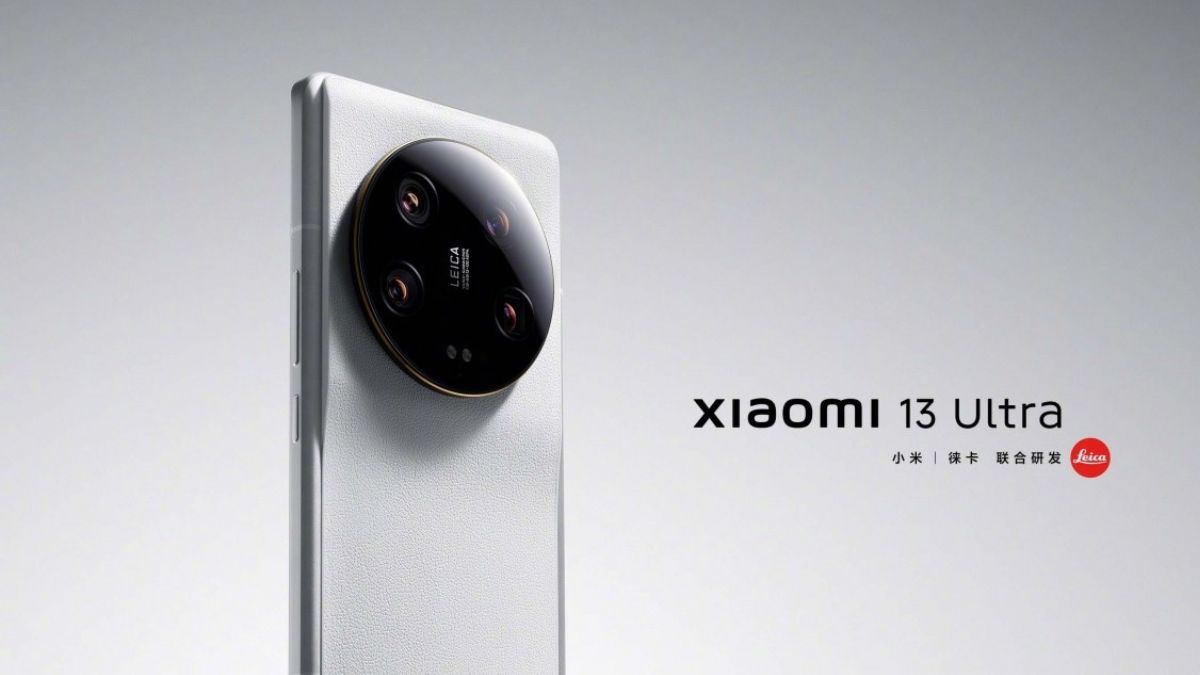
Xiaomi has finally given fans an official look at its highly anticipated smartphone, the Xiaomi 13 Ultra, just a day ahead of its launch. The Xiaomi Weibo account revealed full images of the Xiaomi 13 Ultra, matching previous renders with the big popped rising around the camera island.
Xiaomi 13 Ultra: Specifications and Features
The Xiaomi 13 Ultra is expected to be a significant upgrade over its predecessor, the Xiaomi 12, in terms of its specifications. The phone is powered by a Snapdragon 8 Gen 2 processor and comes with LPDDR5X memory and UFS 4.0 flash memory. It features a 6.74″ AMOLED LTPO display with a 2K resolution and a 120Hz refresh rate, which promises to deliver an exceptional viewing experience.
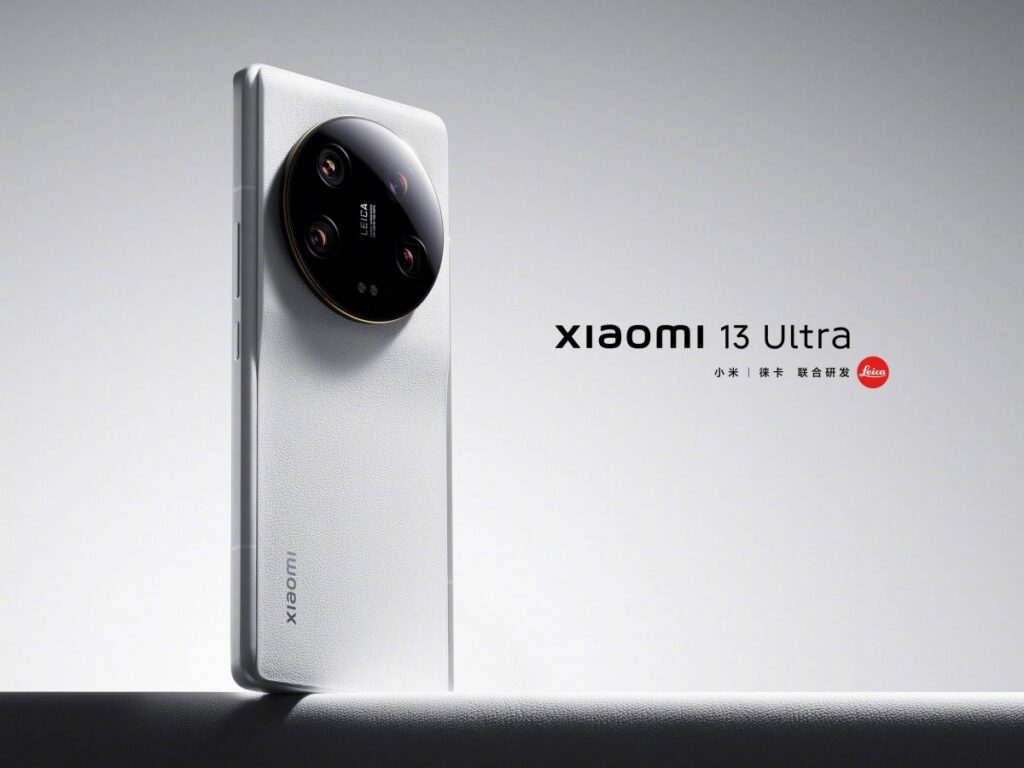
The camera setup on the Xiaomi 13 Ultra is nothing short of impressive, featuring a 32MP selfie camera and quad rear cameras. The rear camera setup includes a 50MP IMX989 OIS primary lens, a 50MP IMX858 ultra-wide-angle lens, a 50MP IMX858 3X OIS telephoto lens, and a 50MP IMX858 5X OIS periscope lens. The camera system also comes with Leica branding, which is sure to appeal to photography enthusiasts.
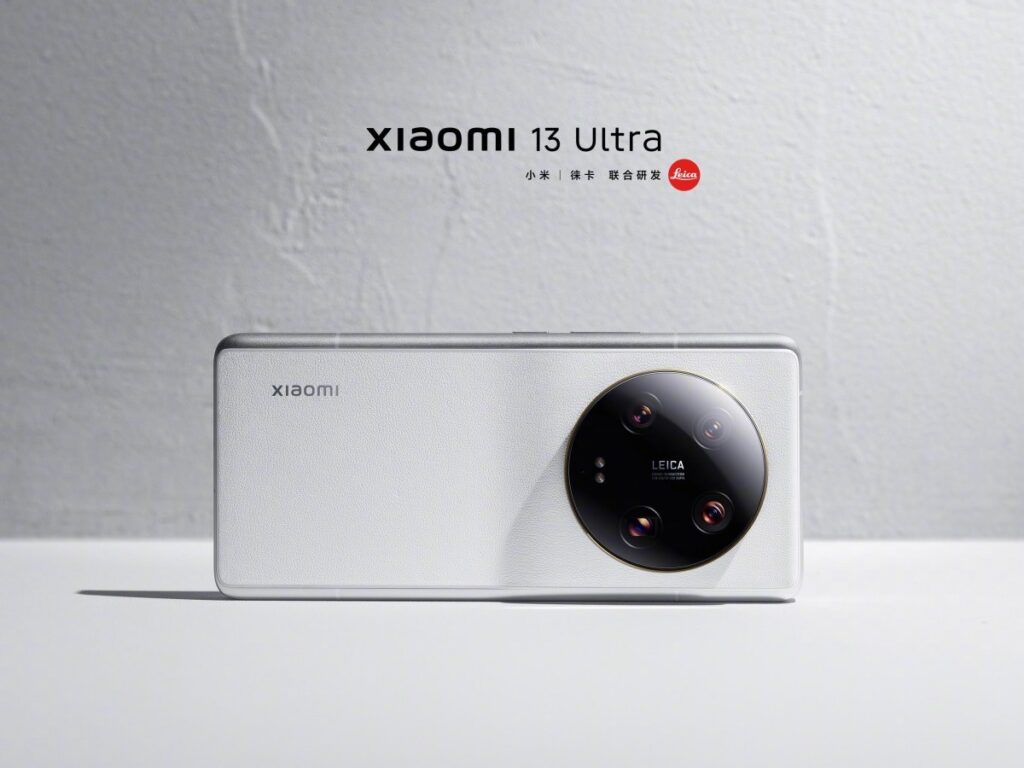
Powering the Xiaomi 13 Ultra is a 4900mAh battery, which is capable of being charged at a blazing-fast 90W using the included charger. Additionally, the phone also comes with a 50W wireless charger, which provides added convenience. The phone also includes an X-axis motor, which promises to deliver an enhanced gaming experience. The device is IP68 certified, ensuring it is dust and water-resistant, and comes with a display fingerprint sensor. It also supports WiFi 7, which provides faster internet speeds than the previous WiFi 6 standard.
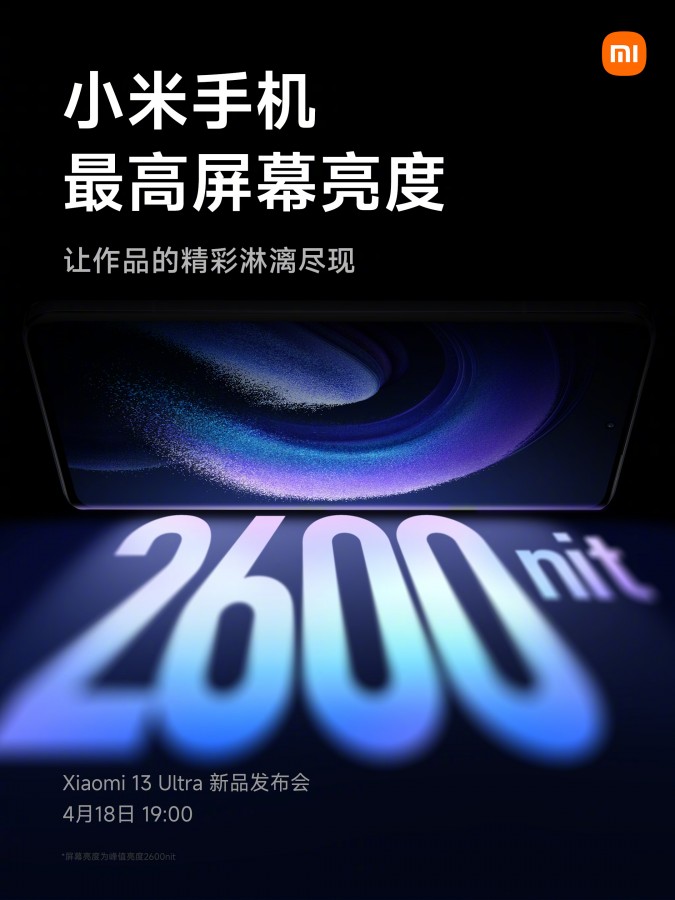
The Xiaomi 13 Ultra will run on the latest Android 13, which will be a significant improvement over the previous version. Overall, the Xiaomi 13 Ultra promises to be an exceptional smartphone that offers impressive features and capabilities. Fans of Xiaomi can look forward to the launch event tomorrow, where they can expect to learn more about the phone’s pricing and availability.
| Specifications | Details |
|---|---|
| Processor | Snapdragon 8 Gen 2 |
| Memory | LPDDR5X |
| Storage | UFS 4.0 flash memory |
| Display | 6.74″ AMOLED LTPO, 2K resolution, 120Hz refresh rate |
| Front Camera | 32MP selfie camera |
| Rear Camera | 50MP IMX989 OIS primary lens, 50MP IMX858 ultra wide-angle, 50MP IMX858 3X OIS telephoto lens, 50MP IMX858 5X OIS periscope lens, Leica branding |
| Battery | 4900mAh |
| Charging | 90W fast charger, 50W wireless charger |
| Motor | X-axis motor |
| IP Rating | IP68 certified |
| Biometrics | Display fingerprint |
| Connectivity | WiFi 7 |
| Operating System | Android 13 |
Also read:
- PUBG Mobile 90 FPS support on OnePlus Smartphones – Here is How to Play
- OnePlus Rolls Out OxygenOS 13 C.19 Update for Indian OnePlus 10R Devices
- Nothing X 2.2.1 App Update: Personalize Your Listening Experience with New Features
If you like our article, follow us on Google News and Instagram, or join our Telegram Group.
For More Such Updates Follow Us On – Telegram, Twitter, Google News, WhatsApp and Facebook
Xiaomi
New Xiaomi Pad 7 Featuring High-End Chipsets to Arrive in February
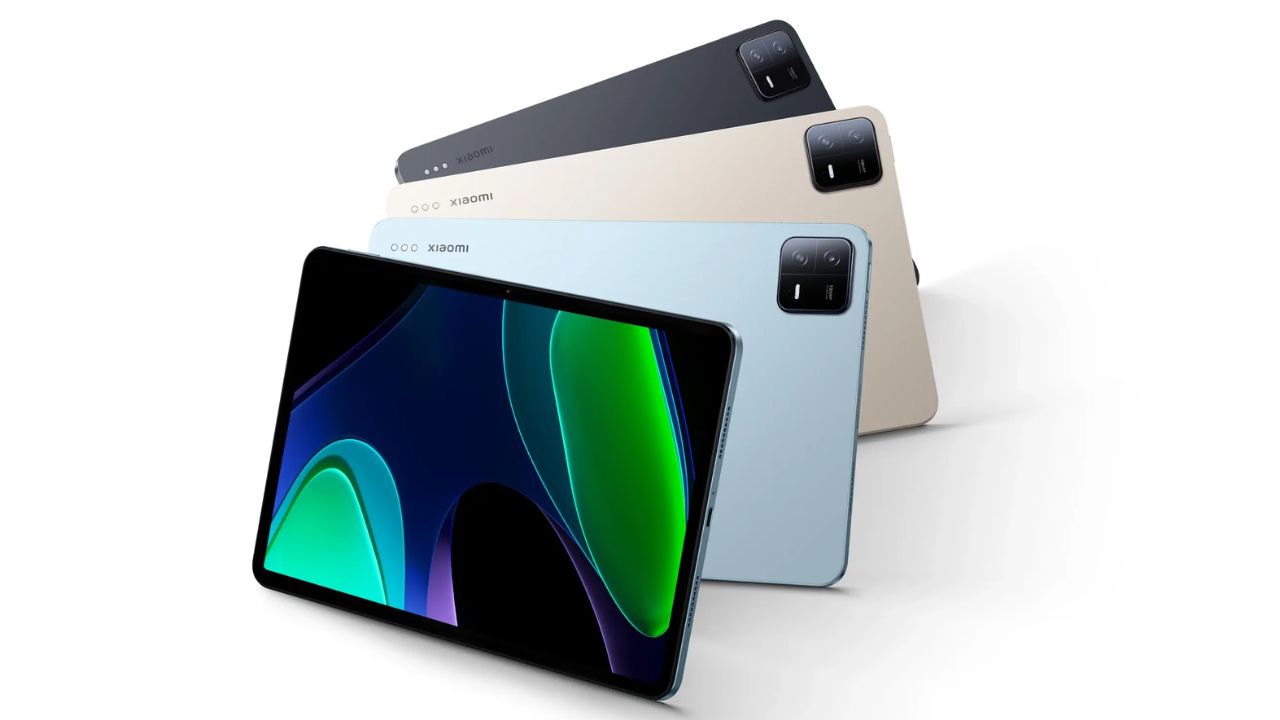
In April 2023, Xiaomi launched the Pad 6 Pro in China and is now gearing up for the release of its highly anticipated “Xiaomi Pad 7 lineup.” According to reliable sources, the new flagship tablet is launching next month, and it will have a Snapdragon 8 Gen 3 chipset.
The leak hints at a Pad 7 model equipped with last year’s Snapdragon 8 Gen 2, while the Pro variant is expected to feature Qualcomm’s latest top-tier SoC. This marks a significant improvement from the previous Pad 6 lineup, where the Pro and Max models were equipped with a one-year-old chip, while the vanilla version, reviewed last summer, housed a dated Snapdragon 870.
The Pad 7 might support 100W fast charging and the Pad 7 Pro is rumored to sport an OLED panel, a first move for Xiaomi’s tablet series, which has traditionally featured LCD displays.
While these features are certainly appealing, fans are hoping that Xiaomi will break its trend of limiting top-tier tablets to the Chinese market. Many enthusiasts are eagerly anticipating the global release of the Pad 7 Pro, with its advanced features and top-of-the-line specifications.
For More Such Updates Follow Us On – Telegram, Twitter, Google News, WhatsApp and Facebook
News
POCO F5 Receives HyperOS Update Rollout Across India
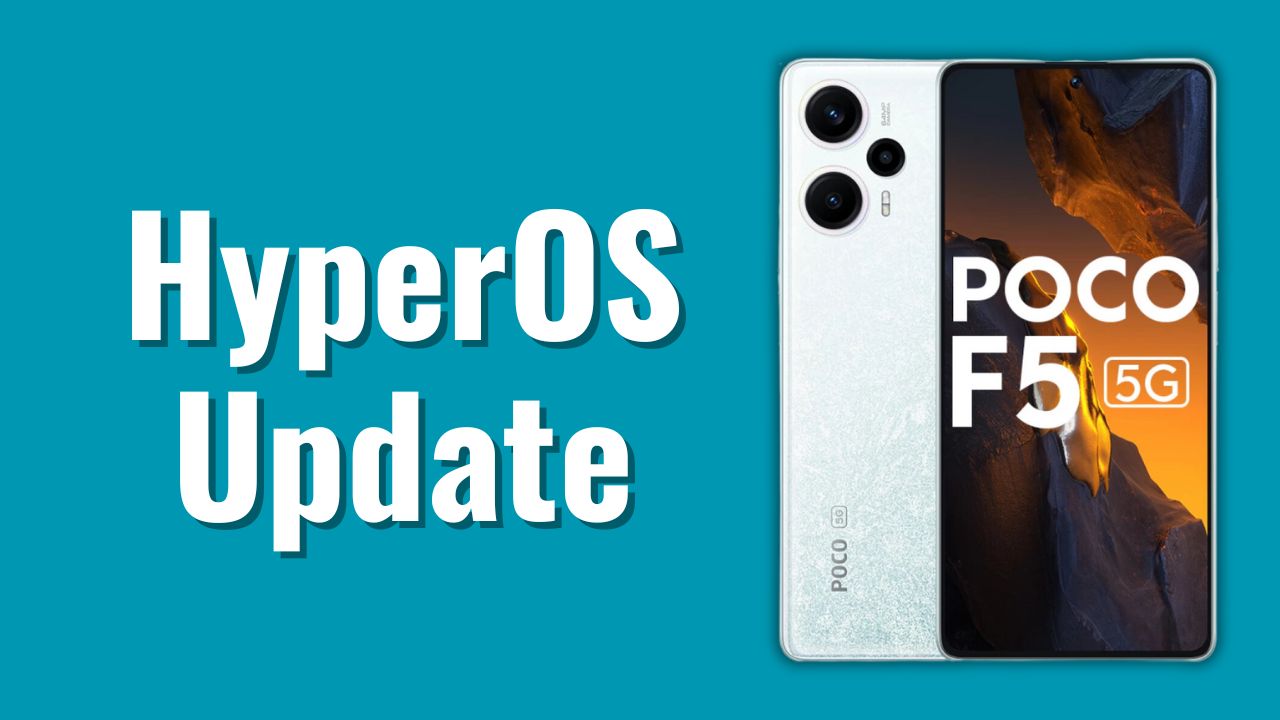
POCO has officially announced the widespread rollout of the HyperOS update for its POCO F5 smartphone in India. This comes a month after the initial confirmation and follows a successful pilot rollout in the preceding weeks. Xiaomi’s HyperOS is a human-centric system designed to connect personal devices, cars, and smart home products.
The primary focus of HyperOS lies in ensuring the best device performance, facilitating convenient connections across various platforms, and prioritizing end-to-end privacy and security.
The Xiaomi 13 Pro also has a HyperOS update with version 1.0.5.0.UMRINXM comes with the size of 5GB. The HyperOS update brings the Android security patch for December 2023.

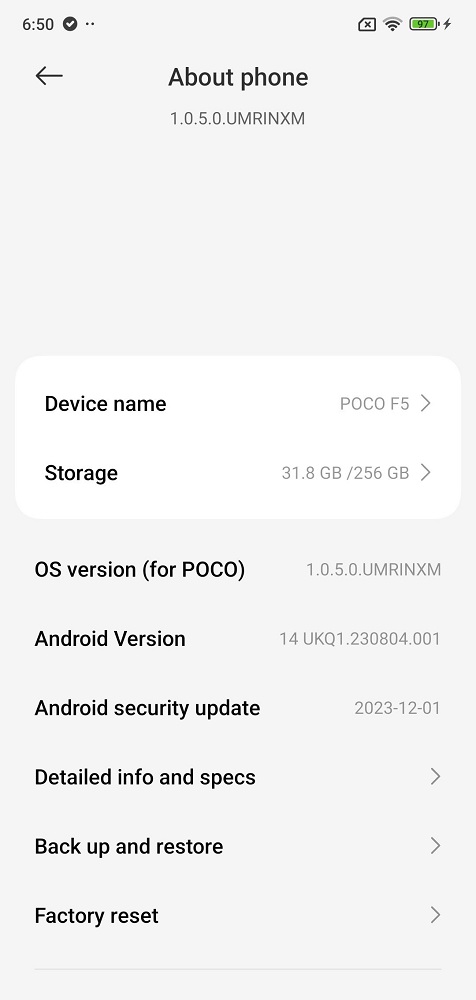
Changelog:
System
- Updated Android Security Patch to December 2023. Increased system security.
Comprehensive refactoring
- Upgraded memory management engine makes frees up more resources and makes memory usage more efficient
Vibrant aesthetics
- Global aesthetics draw inspiration from life itself and change the way your device looks and feels.
New animation language makes interactions with your device wholesome and intuitive.
Natural colors bring vibrancy and vitality to every corner of your device.
Our all-new system font supports multiple writing systems.
Redesigned Weather app not only gives you important information, but also shows you how it feels outside.
Notifications are focused on important information, presenting it to you in the most efficient way
Every photo can look like an art poster on your Lock screen, enhanced by multiple effects and dynamic rendering.
New Home screen icons refresh familiar items with new shapes and colors
Our in-house multi-rendering technology makes visuals delicate and comfortable across the whole system.
Multitasking is now even more straightforward and convenient with an upgraded multi-window interface.
Other improvements and optimization
- New: VoNR support for Jio
Users can expect improved performance, seamless connectivity, and enhanced security features as they launch the HyperOS on their POCO F5 smartphones.
For More Such Updates Follow Us On – Telegram, Twitter, Google News, WhatsApp and Facebook
News
Xiaomi President Confirms Arrival of Xiaomi MIX Fold 3 with August 2023 Launch

Xiaomi enthusiasts around the world are eagerly awaiting the arrival of the Xiaomi MIX Fold 3, the next-generation foldable smartphone from the Chinese tech giant. With an expected launch date in August 2023, this highly anticipated device is set to redefine the boundaries of mobile technology with its innovative features and cutting-edge design.
The news of the upcoming Xiaomi MIX Fold 3 was revealed by none other than the president of Xiaomi, Lu Weibing. During the launch event of the Xiaomi Smart Manufacturing Digital Intelligence System 2.0 at the Beijing Yizhuang Smart Factory, Lu made an exciting announcement that the first mass-produced model of this revolutionary smartphone will indeed be the Xiaomi MIX Fold 3.
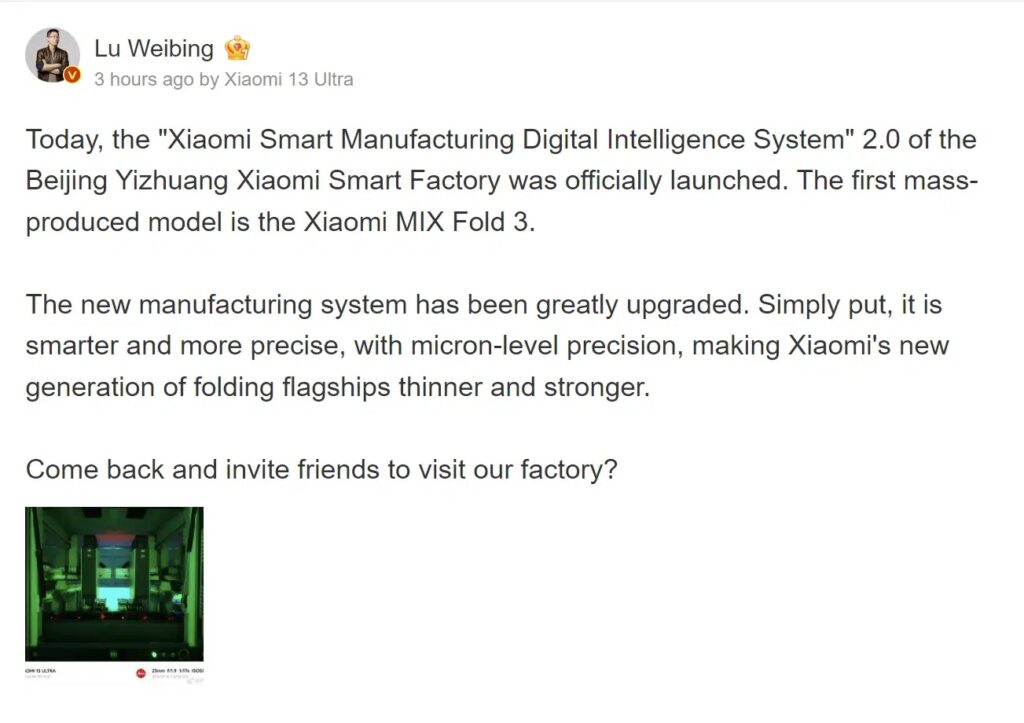
This announcement has sparked a wave of speculation and excitement among tech enthusiasts and Xiaomi fans alike. With the confirmation of the MIX Fold 3’s existence and imminent launch, anticipation is building as users eagerly await the unveiling of this groundbreaking device.

Rumors surrounding the specifications of the Xiaomi MIX Fold 3 suggest that it will boast an impressive array of features. The device is expected to sport a large foldable display, offering users a truly immersive and unique viewing experience. The camera setup is also rumored to be exceptional, with a 50 MP Sony IMX 858 sensor, a telephoto lens, and a periscope telephoto lens that mirrors the setup found in the Xiaomi 13 Ultra.
With the MIX Fold 3, Xiaomi aims to build upon the success of its previous foldable smartphones, taking the technology to new heights. The company has a reputation for delivering top-notch devices that offer a combination of style, functionality, and affordability, and the MIX Fold 3 is poised to continue this tradition.
As August 2023 approaches, tech enthusiasts and smartphone aficionados will be eagerly awaiting the official launch of the Xiaomi MIX Fold 3. The device promises to deliver an unrivaled user experience and push the boundaries of what a smartphone can do. With its innovative features and cutting-edge design, the MIX Fold 3 is set to make a significant impact in the competitive smartphone market, further solidifying Xiaomi’s position as a leading player in the industry.
For More Such Updates Follow Us On – Telegram, Twitter, Google News, WhatsApp and Facebook


